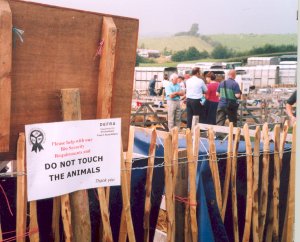Altered Lifescapes
[ Back to Analytical themes ]
For many respondents, everyday places changed dramatically during FMD and some of these have altered permanently. While the pre-FMD lifescape undoubtedly contained hardships, our data shows that the alterations brought about by the epidemic affected respondents’ sense of identity, self-esteem and well-being.
Respondents wrote about making everyday journeys to work past burning pyres or mounds of dead livestock and through the logistical traffic that went with the culls. In later diaries, long after the epidemic, they speak of being reminded of such scenes at particular points on their journeys. A sense of ‘FMD identity’ is called up in reminders such as tarmac strips where disinfectant mats were laid on roads and how only those who lived through the disaster would know what these represented.
We found the concept of "lifescape" developed by others (Somé & McSweeney 1996; (Ingold, 1992 & 2000; Howorth 1999) useful as a way to help articulate the complex spatial, emotional and ethical dimensions of the relationship between landscape, livestock, farming and rural communities. Lifescape then is a way of framing the social, cultural and economic interactions that occur for people across the landscape. Lifescape articulates the being-in-the-world attachment to place and landscape, highlighting that through familiar fields and woodlands, roads and paths, people create a sense of self and belonging.
Site Design by FractalWeb with the generous support of Cumbria County Council